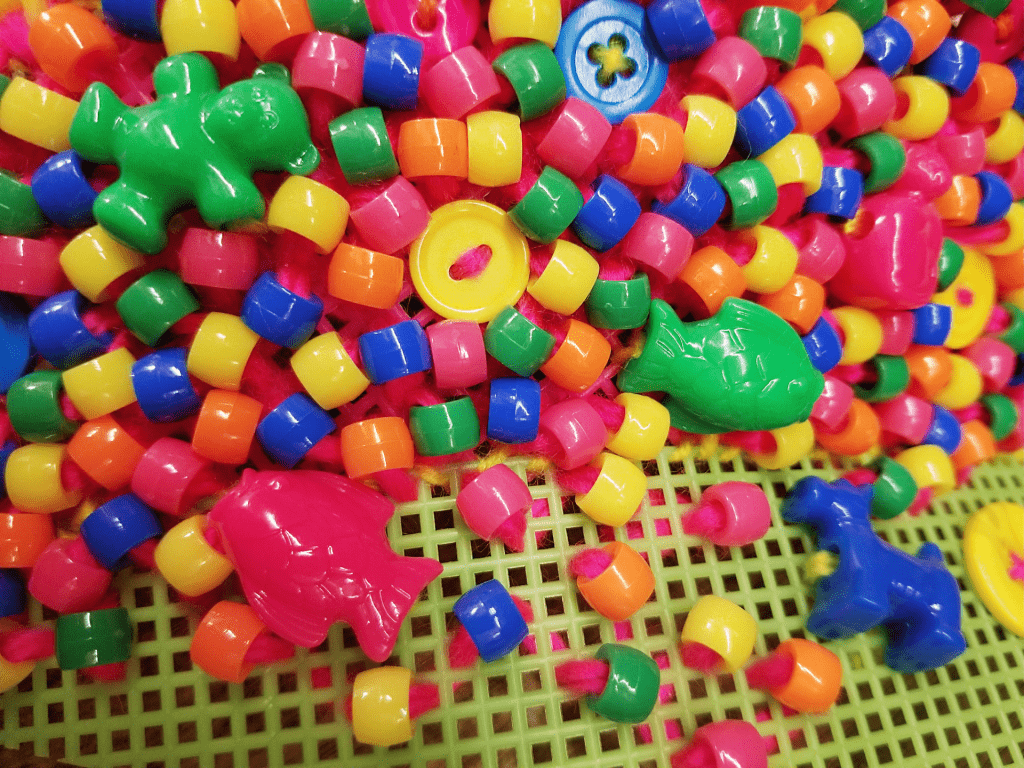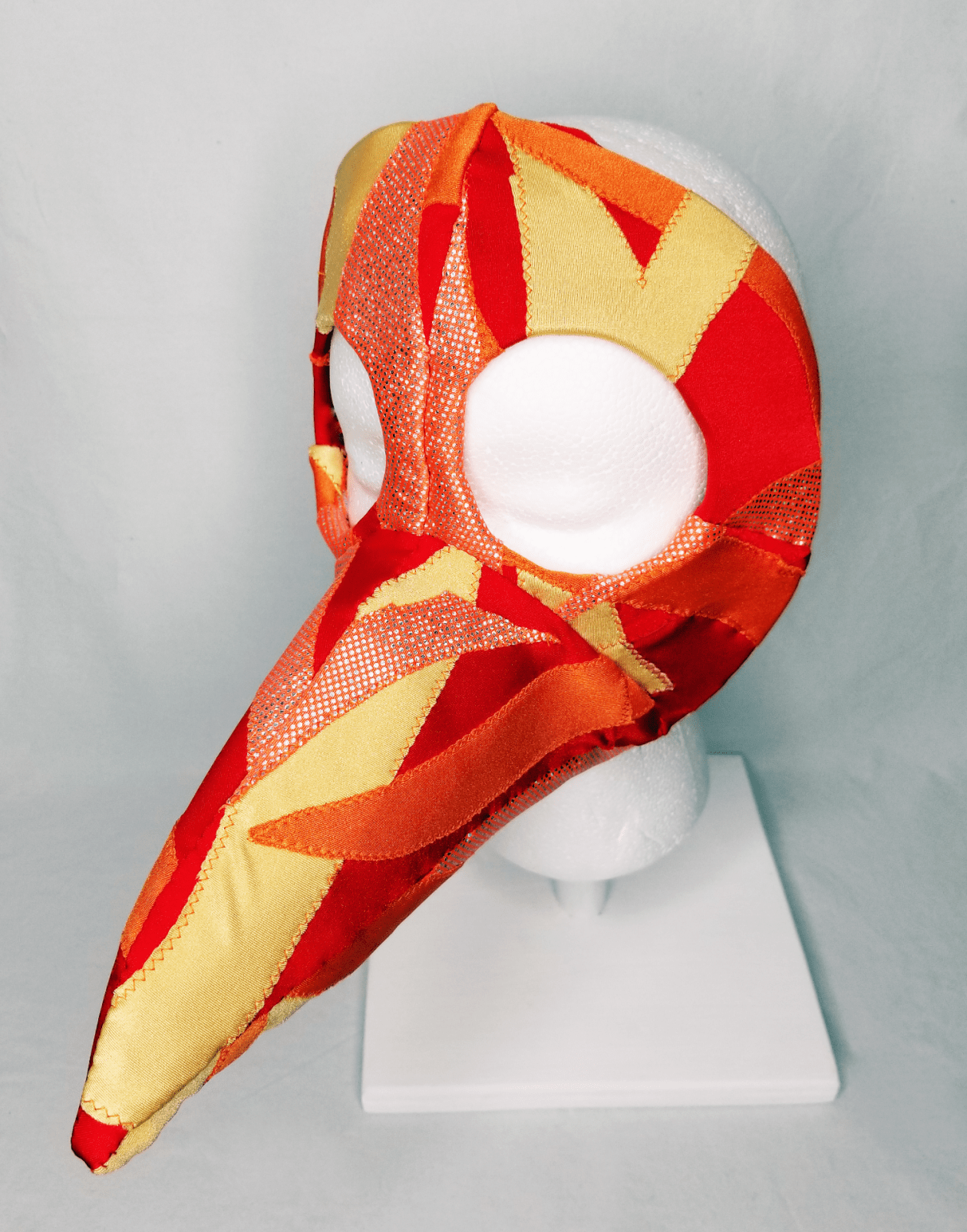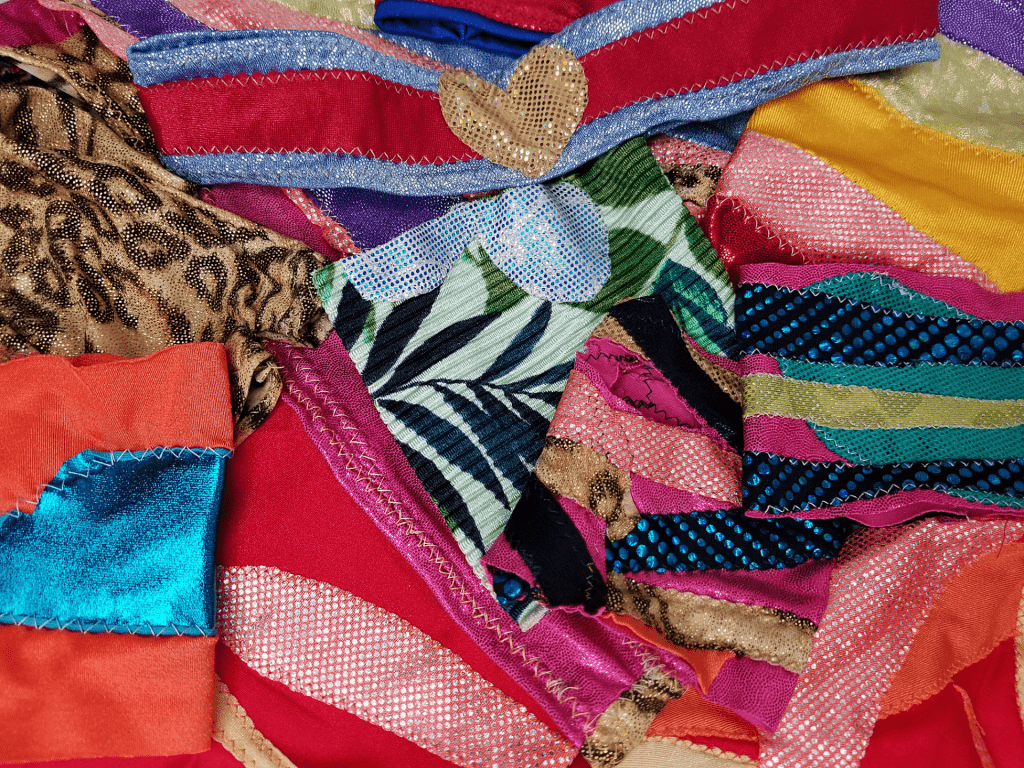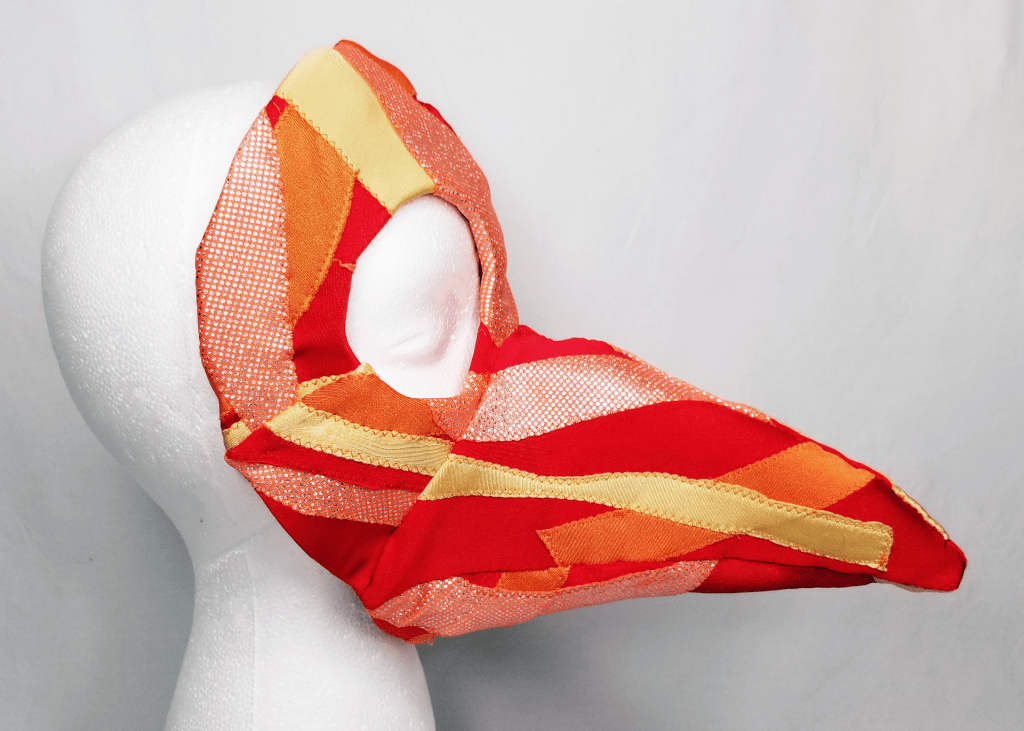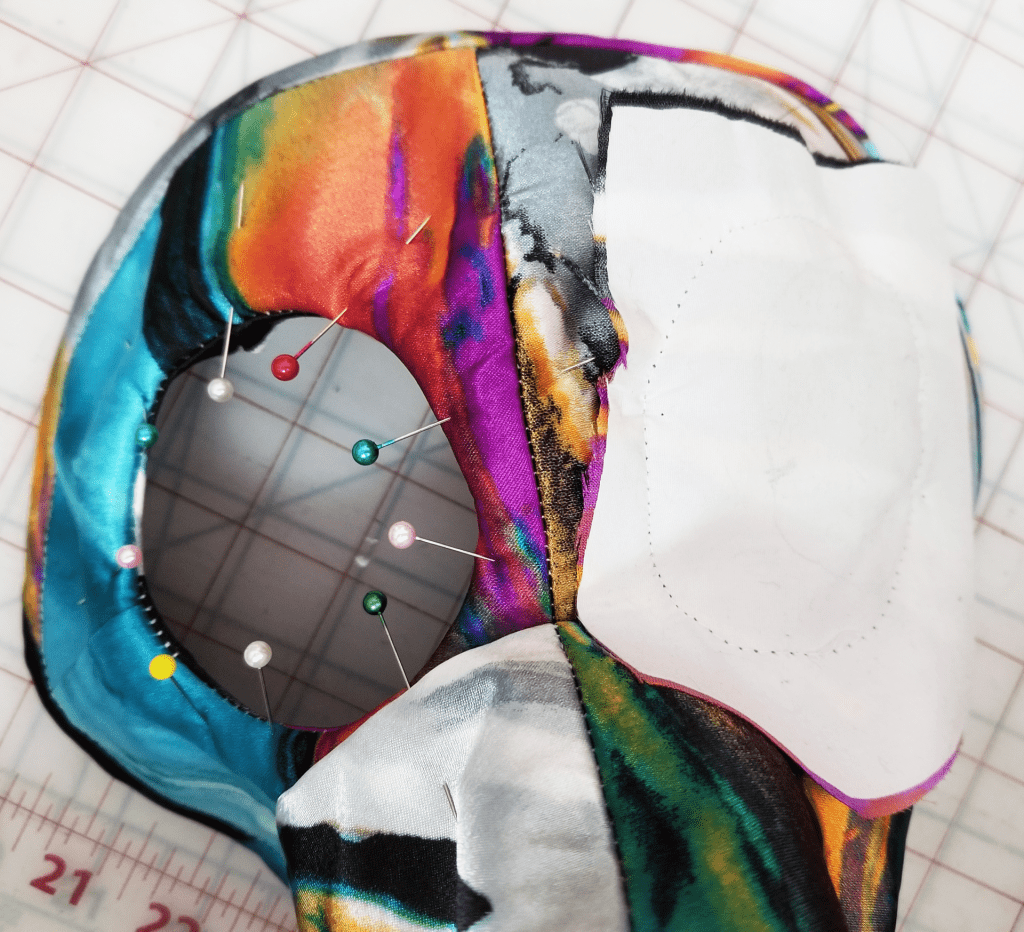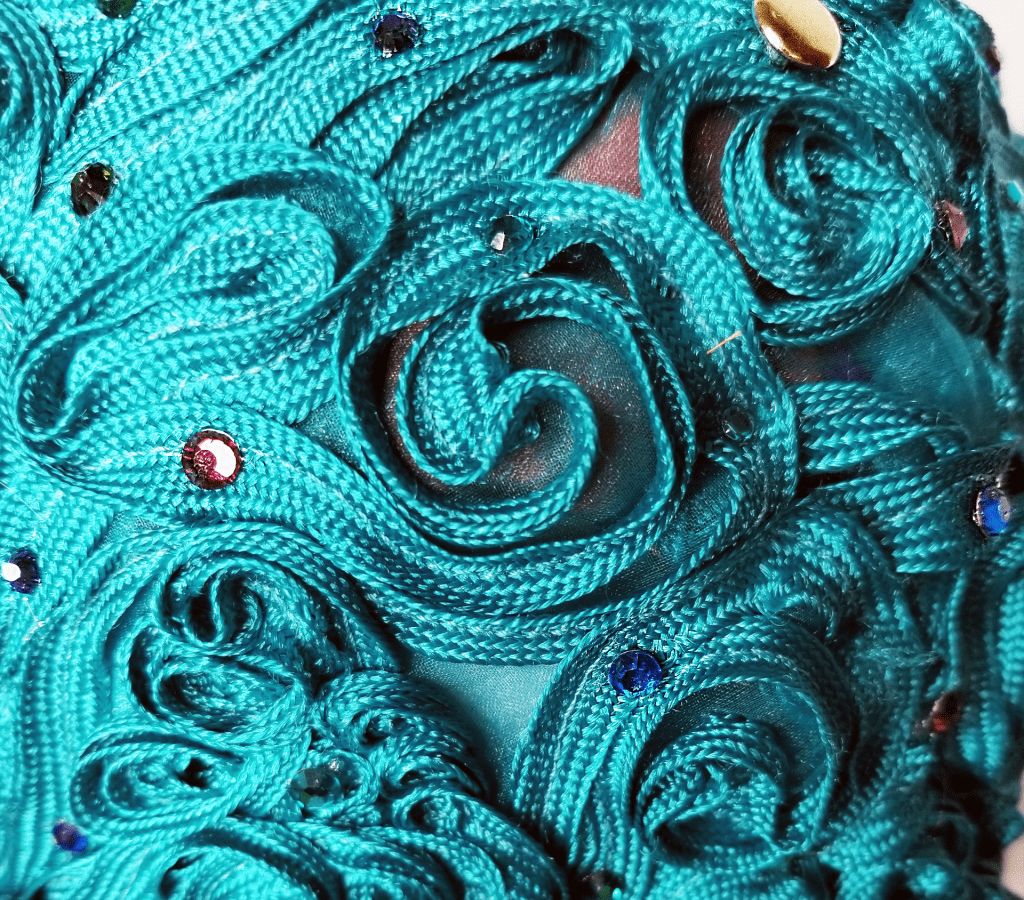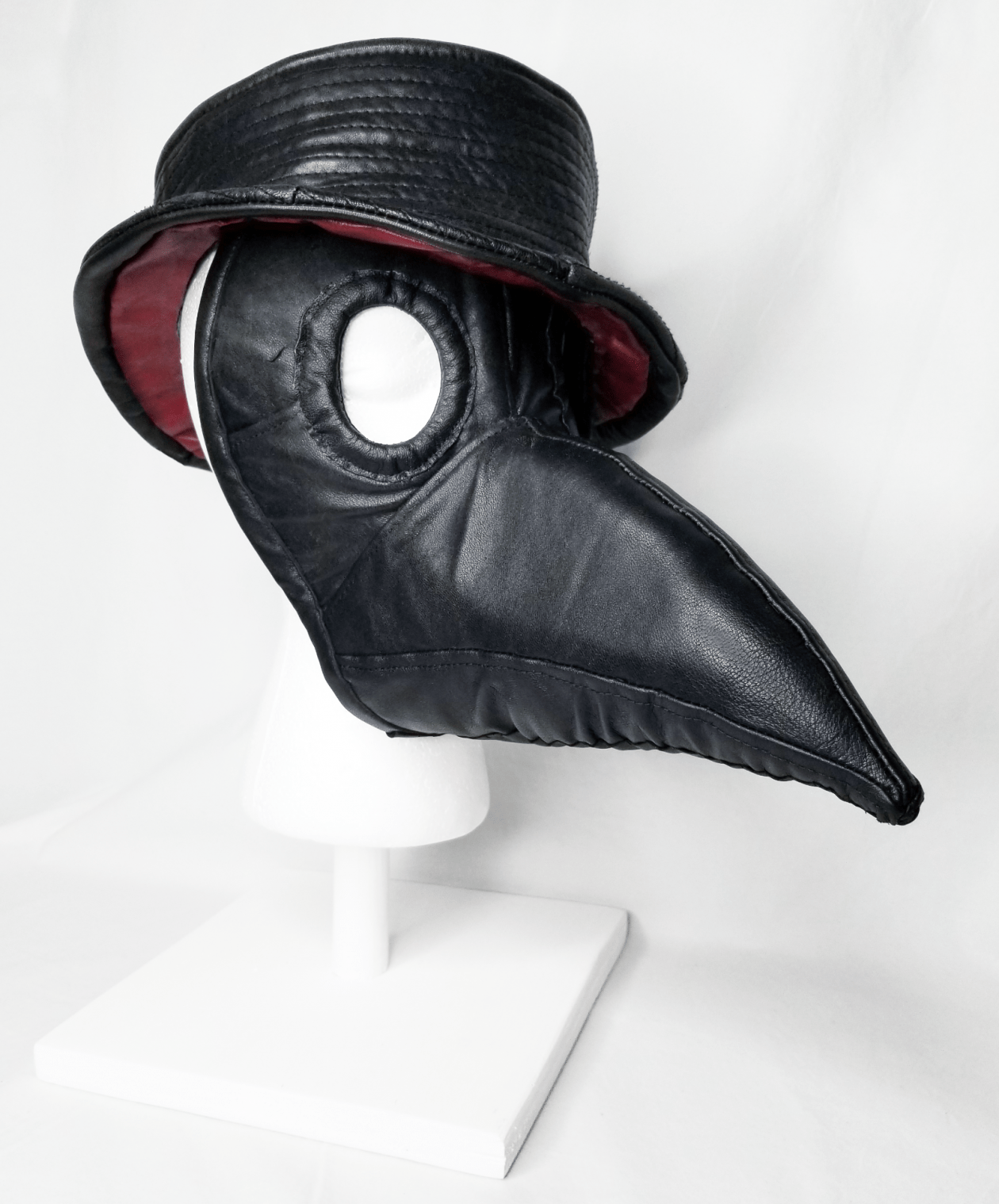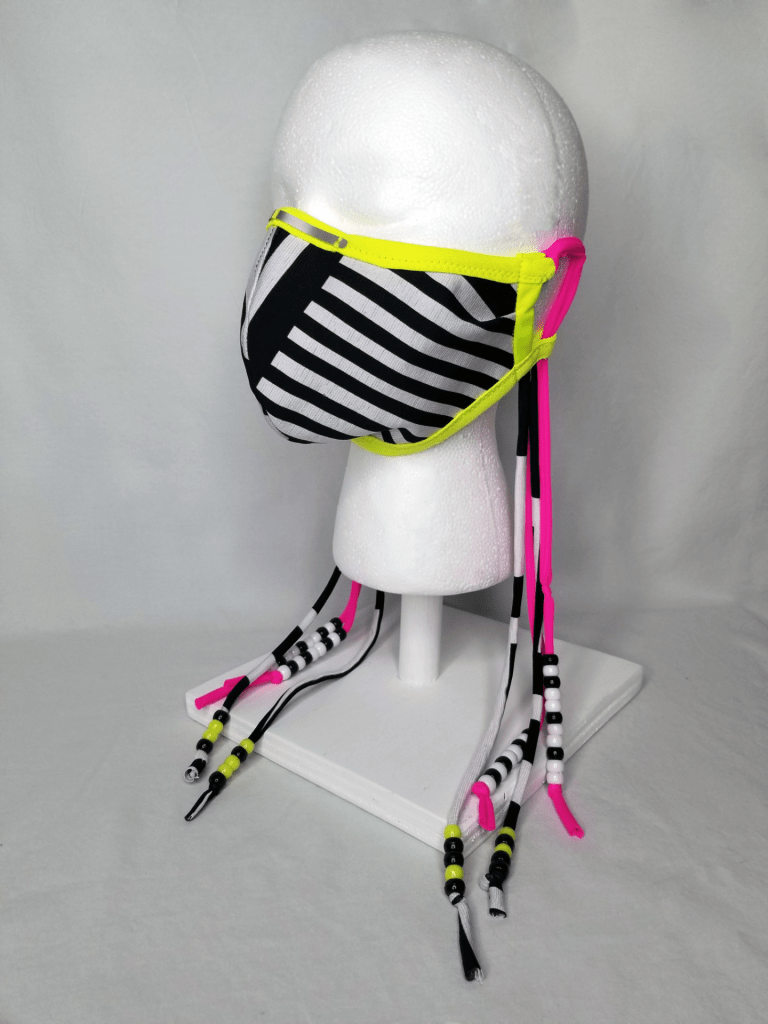Cupcake: A Design Signature
The Cupcake costume was originally created in 2010 for the first Circus Couture (CC) event. We were developing a new concept, and needed a grand, imaginative, and over-the-top design for promotional materials and media spots, and I came up with the Cupcake concept. This look evolved into many iterations over time, spawned my “Mini-Cupcakes” series (including the #19/20 Valentine look), and became my first “signature” costume look.

This first iteration of the Cupcake look involved an oversized pink wig, developed by Thomas Richards-Keyes, Meghann Mason, and Kelsey Contois Husch. I worked with model Karlee to balance the oversized proportions of the ensemble and developed a modular, multi-layered look.


The Cupcake ensemble consists of pink glitter shoes adorned with spikes, turquoise sequin legwarmers, aqua and pink thigh highs with ruffle and bow trim, pink sequin briefs, a pink and aqua satin striped corset with studs, spikes, and ribbon/ruffle trim, one long turquoise sequin and mesh glove with claw spikes, one short pink sequin glove with spikes and studs, a pink sequin collar with faux feather trim in pink/turquoise ombré and claw spikes, and bras in medium and light pink adorned with spikes on the shoulder and studs on the cup. The overskirt was made of 80 yards of tulle: light pink, dark pink, white, and turquoise, with a large bow. The skirt was removable for a runway reveal.



Cupcake’s Legacy
The Cupcake skirt and costume pieces were modified and used in subsequent photo shoots, including on location in the desert of Nevada. The Cupcake concept was reworked for the 10th anniversary show of Circus Couture, with an updated concept reflecting the inclusion of Cupcake Clown costume elements. The Cupcake Clown costume was developed as part of the “Mini Cupcakes” series, and features a modular look appropriate for circus performance. The Cupcake Princess look is a revamped take on the original Cupcake skirt, with the turquoise layer removed and the addition of 40 more yards of pink and white tulle, with a hoop skirt worn underneath.




The Cupcake Mask
The Cupcake Mask is created on a base of heavyweight interfacing fused to pale pink cotton canvas. The mask upper has an overlayer of pink sequin fabric, and the beak is made of multiple layers of tulle, gathered and secured. The eye holes are edged in pink foldover elastic, and pink ruffle ribbon trim delineates the mask beak and upper. Light and dark pink sequin trim edges the upper edge of the mask, and a large turquoise sequin bow in tacked in place over the right eye as an asymmetrical embellishment. Studs in medium and large star shapes, round domes, and pyramid studs finish off the embellishments on the mask upper.
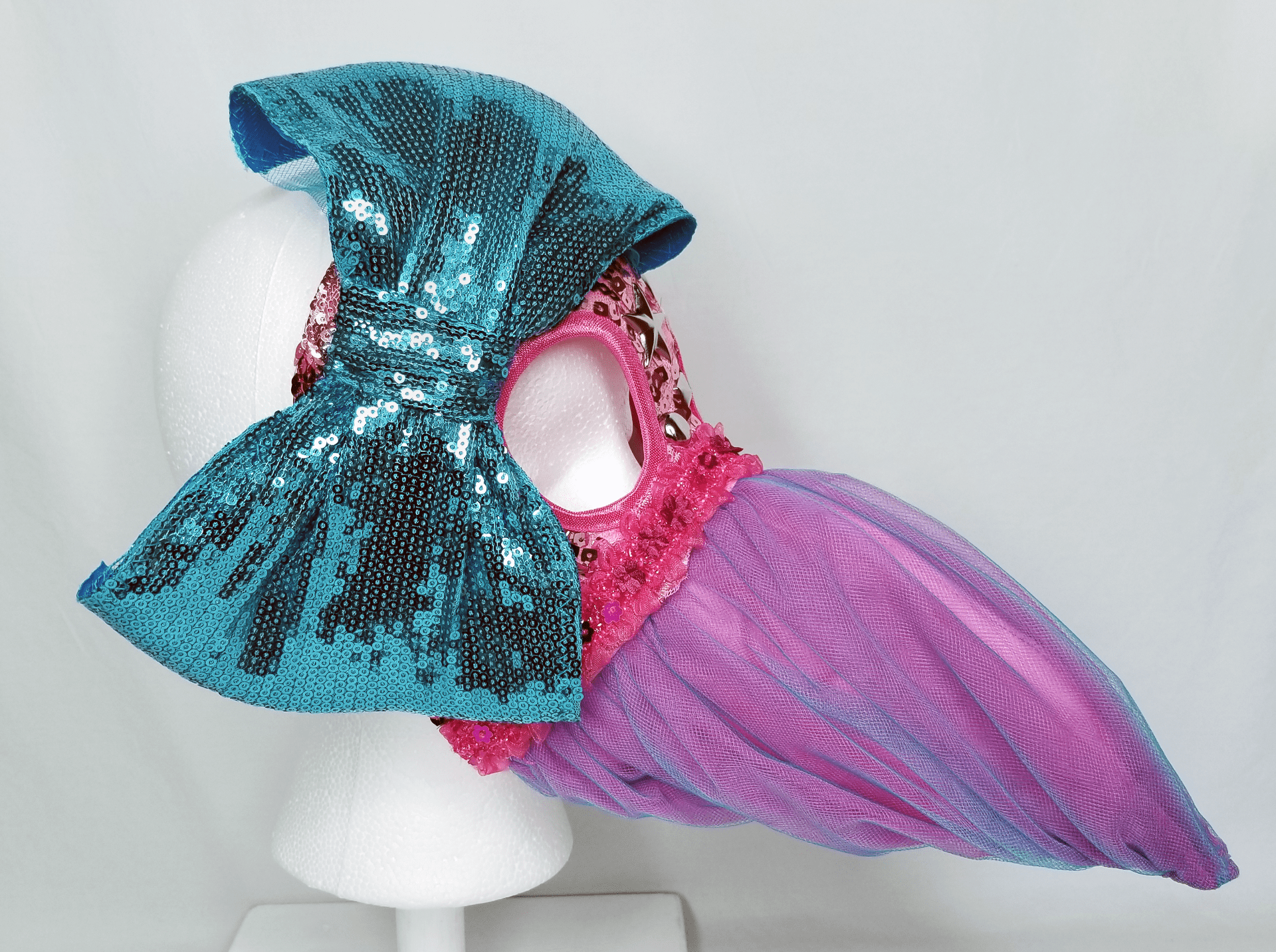


This project is funded in part by the Cornell Council for the Arts. 




































